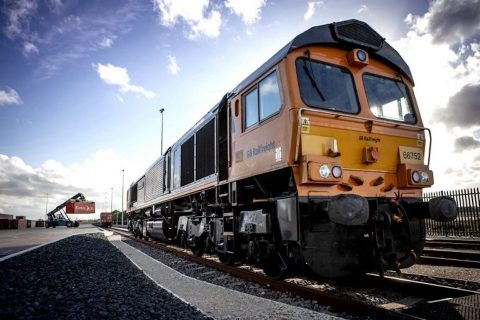Scottish port operator announces rail expansion for Grangemouth

Forth Ports, the operators of Scottish container terminal Grangemouth have announced a development programme to enhance rail handling facilities at the Central Scotland terminal. The three million British pounds (3.3 million euros) investment will double the reception roads available, and extend handling capacity to cope with 775-metre trains, the new standard maximum length for UK freight operations.
Do you want to read the full article?
Thank you for visiting RailFreight.com. Become a member of RailFreight Premium and get full access to all our premium content.
Are you already a member?
Having problems logging in? Call +31(0)10 280 1000 or send an email to customerdesk@promedia.nl.




